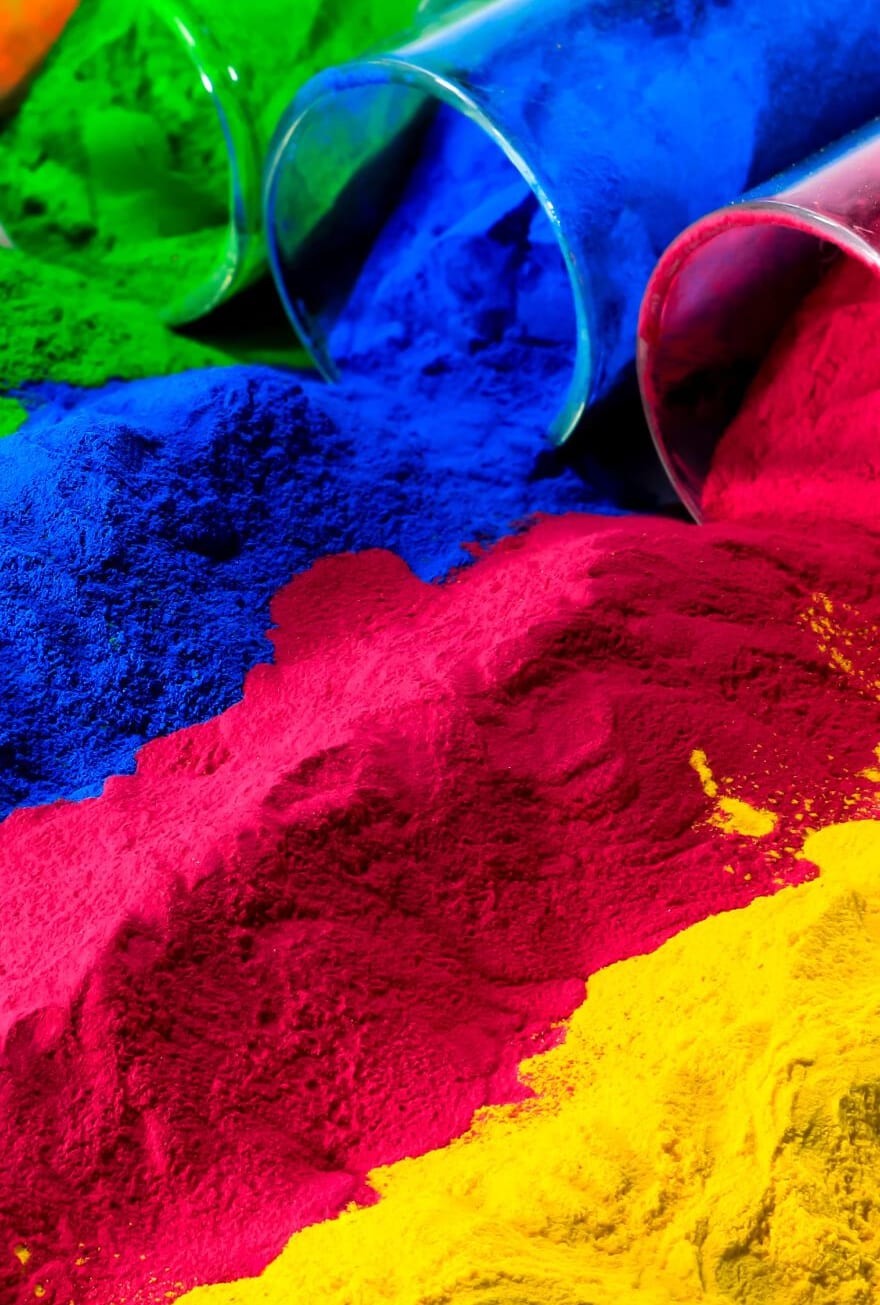Knowde Enhanced TDS
Identification & Functionality
- Chemical Family
- Pigment Type
- CASE Ingredients Functions
- Technologies
Features & Benefits
- Labeling Claims
- CASE Ingredients Features
- Product Highlights
DayGlo T/GT pigments are thermoset, fluorescent pigments that are recommended for applications where solvent resistance is required. GT pigments have higher color strength than T pigments and are based on the same thermoset resin matrix. All are insoluble in a greater number of solvents than are DayGlo A/AX thermoplastic pigments. DayGlo T/GT pigments are designed to be used in formulations and coatings where strong solvents are used and where softening by heat and pressure may be a problem. They are also suitable for use in water based latex systems, where long-term shelf stability is required
Applications & Uses
- Applications
- Compatible Polymers & Resins
- Compatible Substrates & Surfaces
- Ink & Toner Type
- Dispersion & Use
Being organic in nature, the pigments are, in most cases, easily wet out and dispersed in solvent-based vehicles or liquid resins by intensive stirring (Cowles Dissolver). Formulations produced by such means give Hegman Gage readings of 4.5 to 5.0 for application by spray, brush and roll, or knife coating. If finer particle sizes are required, T/GT pigments can be wet ground in suitable formulations by wet milling.
The fact that T/GT pigments are based on a thermoset resin permits them to be used in various coatings or inks made with nitrocellulose, polyvinyl chloride-acetate, polyamide, acrylic, chlorinated rubber and other resins which require strong oxygenated types of solvents such as aromatics, alcohols, esters or ketones. Combinations of these solvents should be evaluated before use.
Color bleed may be a problem in some instances, usually with the red colors. It can occur even though the pigment resin matrix is thermoset and insoluble, and the fluorescent dye is in solid solution throughout the pigment particles and not merely absorbed on the surface. Some solvents leach enough dye from the insoluble particles so that color transfer may be noticeable when the coating surface involved contains significant amounts of plasticizers.
T/GT pigments are suitable for paper coating applications, either solvent or water latex based. Since the pigments are not softened by heat or pressure, the coated paper can be calendared without glazing or sticking to the rolls.
Properties
- Color
- Insoluble in
- Water, Hydrocarbons
- Typical Properties
- Chemical Resistance Data
Solvents:
T/GT Pigments are substantially resistant to the following solvents and plasticizers.Aqueous Ketones Water Acetone Aliphatics Cyclohexanone Heptane Diacetone Alcohol Lactol Spirits Diisobutyl Ketone Mineral Spirits Ethyl Amyl Ketone VM & P Naphtha Isophorone Aromatics Methyl Ethyl Ketone Toluene Methyl Isobutyl Ketone SC #100 (KB Value 91) Halogenated & Misc. SC #3 (KB Value 72) Carbon Disulfide Xylene Carbon Tetrachlorride Alcohols Trichloroethylene Ethyl Alcohol Plasticizers 3–Heptanol Dioctyl Adipate Isobutyl Alcohol Dioctyl Phthalate Isopropyl Alcohol (99%) Dioctyl Sebacate Methyl Alcohol Paraplex G-50 Glycols Paraplex G-62 Diethylene Glycol Esters Ethylene Glycol Butyl Acetate Glycerine DPM Acetate Hexylene Glycol Ethyl Acetate Propylene Glycol Isoamyl Acetate Isopropyl Acetate N-Propyl Acetate PM Acetate Mixtures of some solvents may have a more severe effect on T/GT pigments than the individual solvents alone. An example of such a mixture is equal parts of methyl ethyl ketone and ethyl acetate. This mixture, will partially solvate the pigments producing some bleed and swelling of the pigment. Each solvent alone will not.
It is impossible to completely evaluate the effect of all solvents and mixtures of solvents on the T/GT pigments. They should be tested for satisfactory performance in the system in which they are intended to be used.
| Value | Units | Test Method / Conditions | |
| Average Particle Size (by volume) | 4.0-5.0 | microns | — |
| Bulking Value | 0.0875 | gal / lb | — |
| Decomposition Point | approx. 195 (383) | °C (°F) | — |
| Hegman Grind | min. 5 | — | — |
| Oil Absorption (Raw X Linseed Oil)(lbs Oil / 100 lbs) | 51 | lbs | — |
| Specific Gravity | 1.37 | — | — |
Regulatory & Compliance

